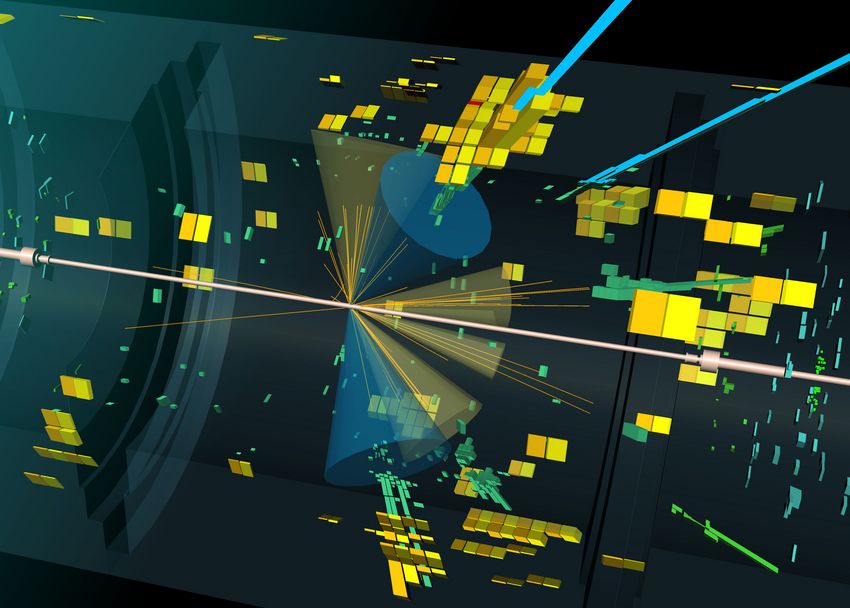As the heaviest elementary particle in the Standard Model, the top quark also couples most strongly of all particles to the Higgs boson. "However, this coupling is directly detectable only by the ttH production process, which is extremely rare. Only one percent of all Higgs bosons are produced together with top quarks" explains Sandra Kortner from the Max Planck Institute for Physics.
The process leaves an extremely complex signature in the detector. Therefore, as many Higgs boson decay channels as possible – into photons, W and Z bosons, tau leptons and beauty quarks – had to be studied and combined.
A first hint of the ttH production was found with the ATLAS experiment last December. Since then, additional data have been analyzed. The current measurements include all proton-proton collision data taken since the beginning of data taking in 2011 until the end of 2017. With a statistical significance of 6.3 standard deviations, the result now strongly indicates that the Higgs mechanism is responsible for the large value of the top quark mass.
It concurs with a recent observation by the CMS experiment with a significance of 5.2 standard deviations using a smaller dataset. This may also give insight to one of the important open questions of the Standard Model: why is there such a wide range of masses among fermions, the class of particles comprised of quarks and leptons that constitute matter.
The measured strength of the Higgs boson coupling to top quarks is consistent with the Standard Model's predictions. “However, more precise measurements with additional data may still reveal deviations from these predictions, caused for instance by the existence of new unknown particles” says Kortner. The observation of the ttH production therefore paves an important new way for potential discoveries.
New results are also available for the previously observed Higgs boson couplings to other particles – tau leptons and W and Z bosons. These measurements are consistent with the Standard Model as well. The group at the Max Planck Institute for Physics has particularly strongly contributed to the measurement of Higgs boson decays in Z bosons [1, 2].
The new results on Higgs boson physics will be presented at this year's LHCP conference in Bologna. Another strong boost in the precision of Higgs boson property measurements is expected with the entire dataset taken until the end of this year.
Publications:
[1] ATLAS Collaboration, Observation of Higgs boson production in association with a top quark pair at the LHC with the ATLAS detector, https://atlas.web.cern.ch/Atlas/GROUPS/PHYSICS/PAPERS/HIGG-2018-13/
[2] ATLAS Collaboration, Measurements of the Higgs boson production, fiducial and differential cross sections in the 4l decay channel at sqrt{s}=13 TeV with the ATLAS detector, https://atlas.web.cern.ch/Atlas/GROUPS/PHYSICS/CONFNOTES/ATLAS-CONF-2018-018/
Contact:
Dr. Sandra Kortner
Max Planck Institute for Physics
+49 (0)89 32354 288
